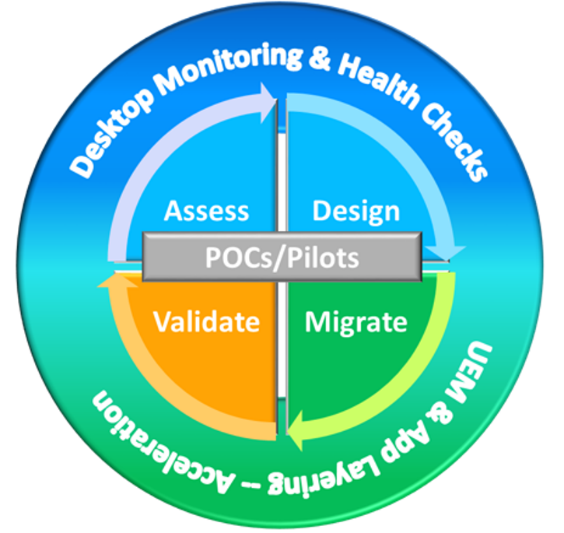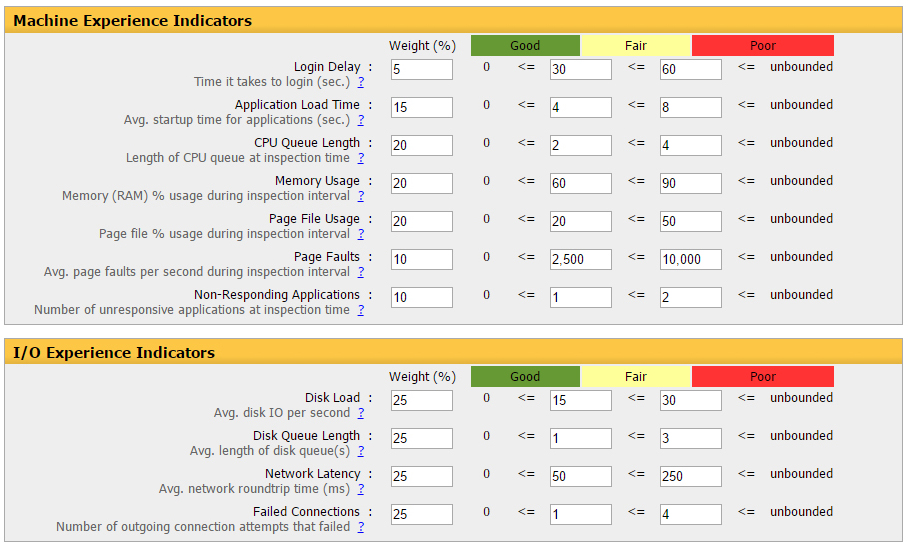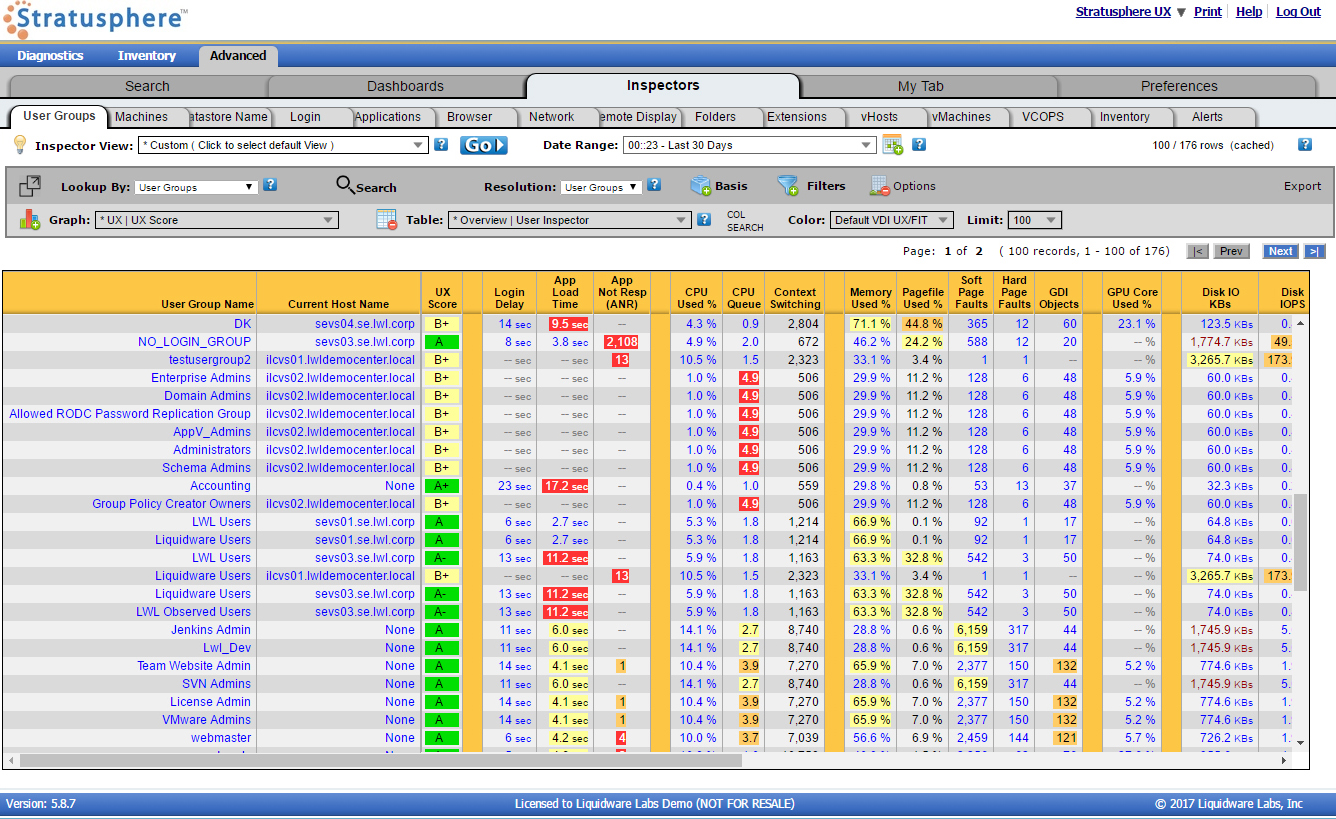In the past, I’ve covered topics such as Breaking Down Silos and Changing Your Point of View and Outside In versus Inside Out. In these and other posts, the theme has been about putting the user first. Regardless of where you might be in the user lifecycle: performing activities such as assessing, designing, migrating or  validating a proof of concept or pilot; or operationally, looking at ongoing monitoring, diagnostics and troubleshooting; or perhaps you’re checking the health or optimizing your platform or infrastructure… In all cases the message and concept is simple: Put the user at the center of workspace delivery and management.
validating a proof of concept or pilot; or operationally, looking at ongoing monitoring, diagnostics and troubleshooting; or perhaps you’re checking the health or optimizing your platform or infrastructure… In all cases the message and concept is simple: Put the user at the center of workspace delivery and management.
On the surface, Stratusphere UX appears to be just another monitoring solution. And while it is common for the solution to be placed in that IT category, there are important and user-centric use cases that are necessary point out. Stratusphere shines and is differentiated in its ability to map use cases and core functions in a user-centric way. When you put the user at the center of the workspace you are able to deliver, manage and meet user expectations; regardless of how that workspace may be delivered—in the cloud, virtually or with good old PCs.
Platform Agnostic
User experience should be agnostic. Users don’t care—or may not even realize—how their windows workspace is being delivered. In the end it is about productivity and meeting expectations. If you change the delivery or modality of how windows is experienced, should it matter? The end user just wants it to work. The user wants the experience she or he had yesterday. The fact that you took her PC away and swapped it for a thin client is your problem, not hers. Why not define success metrics for that workspace irrespective of its delivery?

Stratusphere’s ability to quantify the user experience; to define a key metric that is able to model the experiential findings a user has when sitting in front of a keyboard, provides a platform agnostic measure of success. This collection of machine and I/O experience indicators transcend any specific platform and provide an opportunity to define success outside of traditional infrastructure or platform metrics. This is a critically important measure when defining a user-centric workspace management approach.
Persistent Measurement
Related to platform and delivery is the need for a persistent measurement that can follow the user over time. Perhaps you have not migrated or you do not tie users to a specific Windows delivery, but instead offer flexible workspace delivery options to your user population. Perhaps you have a segment of your user population that leverage a virtual, cloud-based workspace on Monday and Fridays. On Tuesday they are in a corporate location where they use on premises VDI. On Wednesday they’re on the road using a full OS installed on a laptop, and on Thursday they’re located in a remote office streaming server-hosted applications. Does your user know the delivery platform is variable throughout the week? Why monitor and operationalize these platforms using anything other than a user-centric view. Platform and infrastructure is secondary to meeting user expectations and delivering a persistent user experience. No?

For example, in the above screen capture, I examined all user groups over a 30-day period with an eye on user experience score… With the addition of a “Current Host Name” basis column in Stratusphere, I’m able to look at individual groups of users and how their user experience differed over time, and across different hosts. This information tells me not only that user experience changed for these groups, but it provides me with a list of platform and infrastructure areas I should examine to ensure I deliver a persistent user experience.
The User Must be Prioritized
I’ve said it before… The end user should be the center of your IT world when supporting user workloads. That is not to say infrastructure-centric and other monitoring approaches are of no value. But if you define success in meeting user experience based on meeting user expectations.
The Stratusphere composite UX Profile, which is a composite metric that defines the user experience, is critically important in the delivery, management and ability to meet user expectations. Without it, you very well could be making changes that have little-to-no-benefit to the end user.
Infrastructure will come and go. Platforms change, and best practices for workspace deployments will evolve. What remains persistent are users. Meeting expectations and performance requirements—ultimately the user experience—is the only metric that matters. Keep an eye on your infrastructure, but keep a closer eye on user experience as it should define your success in delivering end user workspaces.








[…] define success simply because the help desk phone isn’t ringing. A few months ago, I wrote about putting user experience at the center of the workspace—examining and trending performance and consumption metrics based on the user (versus […]
[…] as defined thresholds. If you follow my ramblings, you’ll know that I’m a strong advocate of Putting User Experience at the Center of the Workspace. In short, measurement inside each and every guest workspace as a means to define success is the […]
[…] Putting User Experience at the Center of the Workspace […]
[…] it’s a necessity or red herring. I’ve also written about quantifying the user experience and putting user metrics at the center of your workspace visibility effort. And regardless of whether you employ physical PCs, on-prem multi-session shared infrastructure or […]